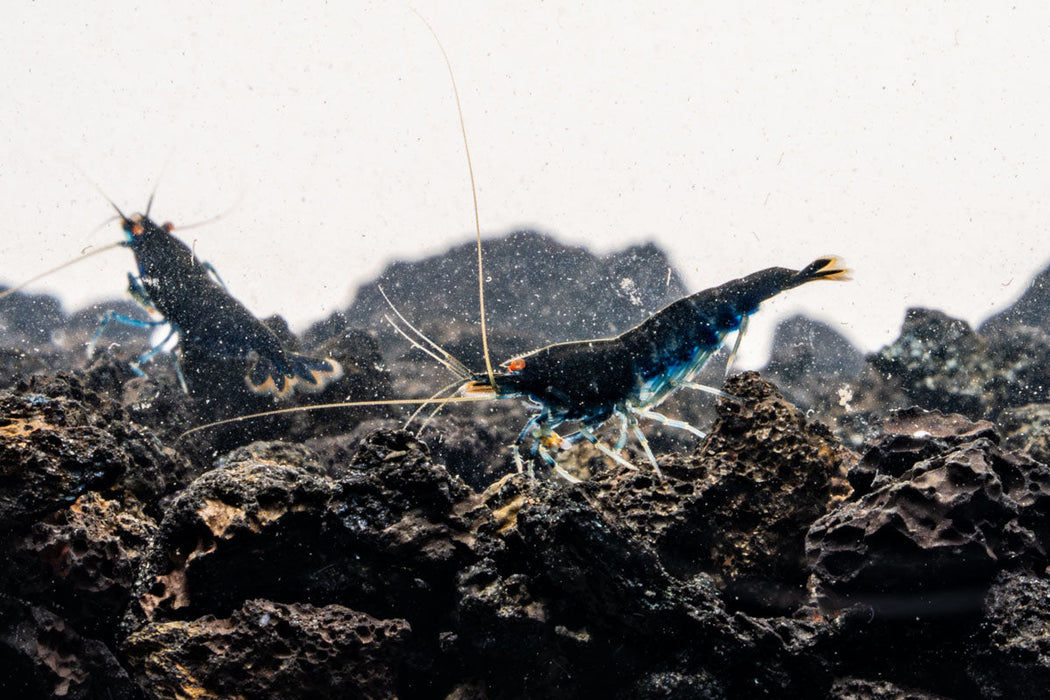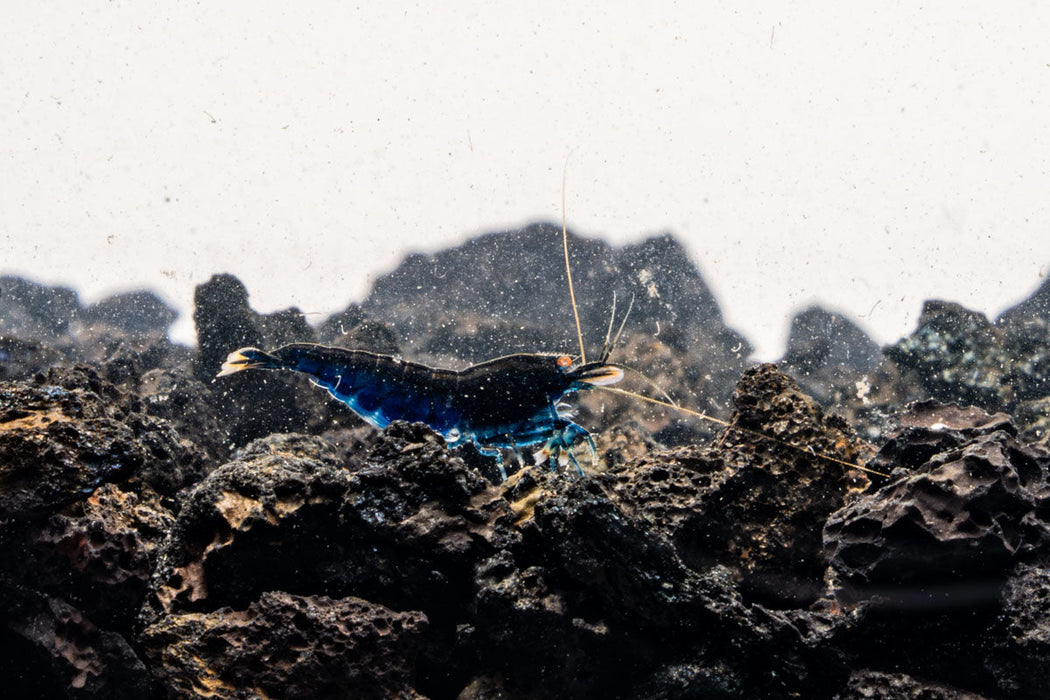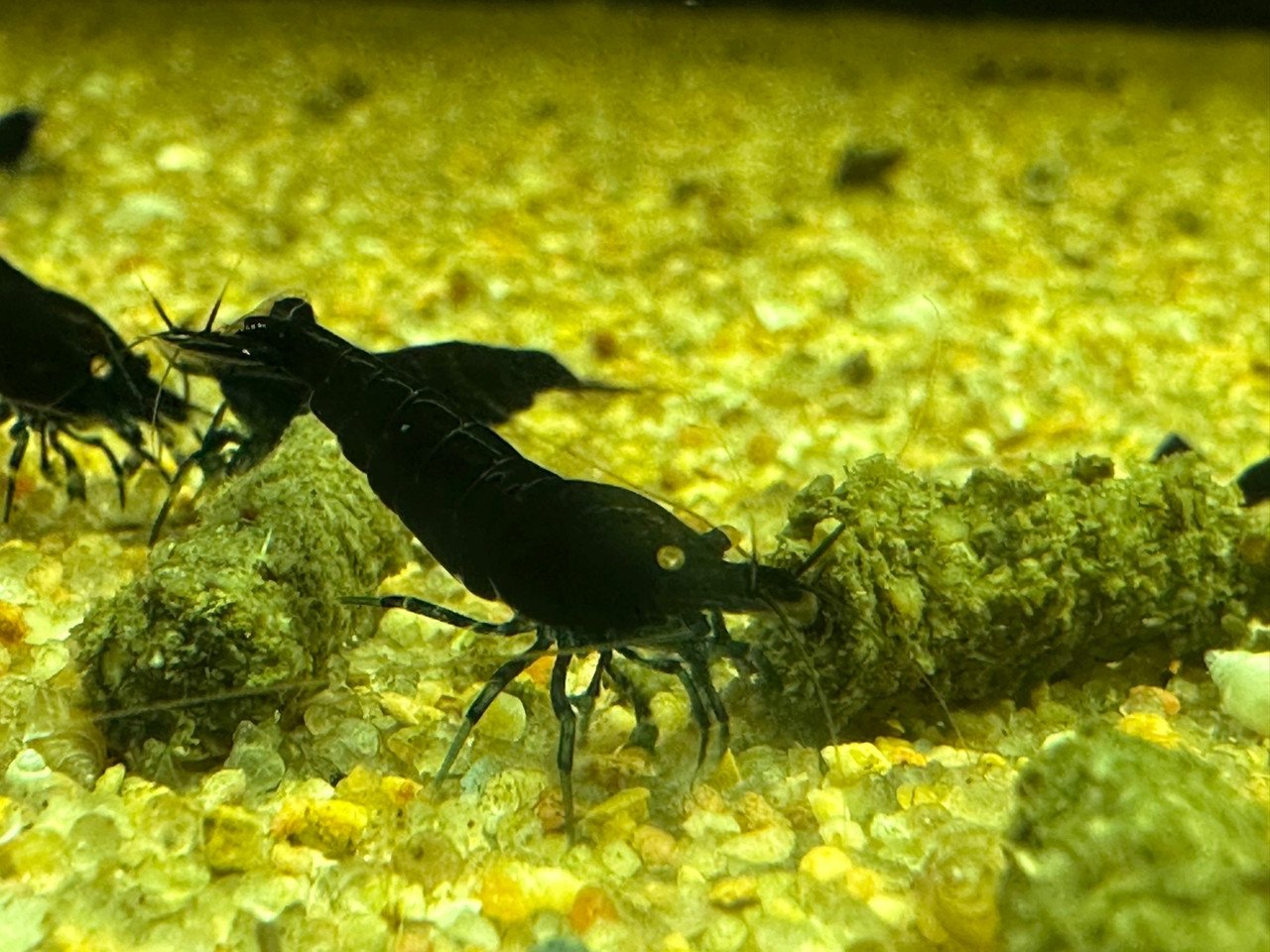Royal Blue Tiger Shrimp face health problems like bacterial infections and poor water quality. Diseases such as white spot syndrome can also affect them.
Royal Blue Tiger Shrimp are a popular choice for aquariums due to their striking appearance and vibrant color. These shrimp require specific care to maintain their health and longevity. Maintaining clean water and proper tank conditions is crucial. They are sensitive to changes in water parameters, and any fluctuations can lead to serious health issues.
Regular monitoring and appropriate water treatments can help prevent common diseases. Providing a balanced diet and minimizing stress will also contribute to their well-being. Proper care ensures that these beautiful creatures thrive in your aquarium, adding a touch of elegance and fascination.

Credit: billyboiaquatics.com
Introduction To Royal Blue Tiger Shrimp
The Royal Blue Tiger Shrimp is a stunning freshwater species. Their vibrant blue color and striking stripes catch everyone’s eye. These shrimps are popular in aquariums due to their unique appearance and fascinating behavior.
Unique Characteristics
Royal Blue Tiger Shrimp have several unique features:
- Coloration: They display a deep blue hue with black stripes.
- Size: They grow to about 1.2 inches in length.
- Behavior: They are active and constantly searching for food.
Habitat And Care Requirements
Creating a suitable habitat is crucial for their health:
| Parameter | Requirement |
|---|---|
| Water Temperature | 68-74°F |
| pH Level | 6.0-7.5 |
| Water Hardness | 4-6 dGH |
Ensure your tank has plenty of plants. These shrimps love hiding spots and algae to graze on. Use a gentle filter to avoid strong water currents.
Feeding is simple. Provide a balanced diet of algae wafers, blanched vegetables, and shrimp pellets. Keep the tank clean by changing the water regularly.

Credit: buceplant.com
Common Health Problems
Royal Blue Tiger Shrimp are beautiful but delicate creatures. They can suffer from various health problems. Understanding these issues helps keep them healthy. Below are some common health problems.
Parasitic Infections
Parasitic infections are common in Royal Blue Tiger Shrimp. These tiny invaders can cause serious harm. Vorticella is a well-known parasite. It looks like tiny white spots on the shrimp. Scutariella Japonica is another parasite. It appears as white, worm-like structures on the gills.
- Remove infected shrimp immediately.
- Quarantine them in a separate tank.
- Use antiparasitic treatments as directed.
Bacterial Diseases
Bacterial diseases can be deadly. Bacterial infections often cause shell rot. This makes the shrimp’s shell soft and weak. Brown spot disease is another bacterial infection. It causes dark spots on the shrimp’s shell.
| Disease | Symptoms | Treatment |
|---|---|---|
| Shell Rot | Soft, weak shell | Antibiotic treatments |
| Brown Spot Disease | Dark spots on shell | Improved water quality |
Fungal Infections
Fungal infections occur due to poor water conditions. Saprolegnia is a common fungus. It looks like cotton on the shrimp’s body. Lagenidium is another harmful fungus. It affects the shrimp’s legs and antennae.
- Keep the tank clean and well-filtered.
- Use antifungal treatments.
- Maintain stable water parameters.
Ensuring proper care and a clean environment is key to preventing these health problems in Royal Blue Tiger Shrimp.
Signs Of Illness
The Royal Blue Tiger Shrimp is a beautiful addition to any aquarium. But, like all pets, they can become ill. Recognizing the signs of illness early can save their lives. Here’s what to look for:
Behavioral Changes
Behavioral changes are often the first signs of illness in shrimp. Watch for these common symptoms:
- Lethargy: Your shrimp may move less or stay still.
- Hiding: They may hide more than usual.
- Erratic Swimming: Unusual swimming patterns can signal trouble.
Physical Symptoms
Physical symptoms are easier to spot. Pay close attention to these signs:
| Symptom | Description |
|---|---|
| Color Changes | Fading or unusual spots may appear on their bodies. |
| Molting Issues | Difficulty shedding their exoskeleton can be a sign. |
| White Patches | White patches on the body might indicate an infection. |
Keeping a close eye on your Royal Blue Tiger Shrimp can help you catch illnesses early. Quick action can mean the difference between life and death for your shrimp.
Preventative Measures
Ensuring the health of your Royal Blue Tiger Shrimp requires vigilance and care. Preventative measures can save your shrimp from potential health problems. Proper tank maintenance and water quality control are key. Let’s dive into these important aspects.
Tank Maintenance
Maintaining a clean tank is crucial for shrimp health. Follow these steps to keep your tank in top condition:
- Clean the tank glass weekly.
- Remove uneaten food daily.
- Vacuum the substrate regularly.
- Check and clean the filter monthly.
A clean tank reduces disease risks. It also keeps shrimp stress-free.
Water Quality Control
Water quality directly impacts shrimp health. Regularly test and adjust the water parameters:
| Parameter | Ideal Range |
|---|---|
| Temperature | 72-78°F (22-26°C) |
| pH Level | 6.5-7.5 |
| Ammonia | 0 ppm |
| Nitrite | 0 ppm |
| Nitrate | < 20 ppm |
Use a reliable test kit to monitor these parameters weekly. Adjustments should be made promptly to avoid stress. Add beneficial bacteria to maintain a healthy ecosystem. Regular water changes are essential. Replace 10-20% of the water weekly.
Effective Treatments
Royal Blue Tiger Shrimp are delicate creatures. Their health can be fragile. Proper care and treatment are crucial. Effective treatments can save their lives. Let’s explore some solutions.
Medication Options
Medications can treat many shrimp health issues. Below are common medications:
| Medication | Purpose |
|---|---|
| Antibacterial Medications | Treat bacterial infections |
| Antifungal Medications | Combat fungal infections |
| Anti-parasitic Medications | Remove parasites |
Important: Always follow dosage instructions. Overdosing can harm shrimp.
Natural Remedies
Natural remedies are often safer. They can improve shrimp health without chemicals. Here are some effective options:
- Indian Almond Leaves: These leaves release beneficial tannins. They boost shrimp immunity.
- Catappa Leaves: Similar to Indian Almond Leaves. They also help in healing wounds.
- Garlic Extract: Garlic can act as a natural parasite repellent.
Note: Always use natural remedies in moderation. Too much can stress shrimp.
Using both medications and natural remedies can be beneficial. Always observe your shrimp closely. Adjust treatments as needed.
Nutritional Needs
Royal Blue Tiger Shrimp are beautiful creatures. Their health depends on their diet. Proper nutrition is vital for their vibrant color and active nature. Understanding their nutritional needs helps prevent health problems.
Balanced Diet
A balanced diet is crucial for Royal Blue Tiger Shrimp. They need a mix of proteins, carbohydrates, and fats. This balance keeps them healthy and energetic.
Feed them high-quality shrimp pellets. Include algae wafers and blanched vegetables. These provide essential nutrients. Avoid overfeeding to prevent water pollution.
| Food Type | Frequency |
|---|---|
| Shrimp Pellets | Daily |
| Algae Wafers | 2-3 times per week |
| Blanched Vegetables | 2 times per week |
Supplements
Supplements can boost the health of your shrimp. Calcium is vital for shell development. You can add cuttlebone to the tank. This provides a steady calcium source.
Provide mineral supplements. These help strengthen their exoskeleton. Always choose shrimp-safe products.
Consider adding vitamins. These improve their immune system. A healthy immune system reduces disease risks.
- Calcium: Essential for shell development
- Minerals: Strengthen exoskeleton
- Vitamins: Boost immune system
Stress Factors
Royal Blue Tiger Shrimp are delicate creatures. Stress can seriously affect their health. Understanding and managing stress factors is essential for their well-being.
Environmental Stressors
Environmental factors can easily stress Royal Blue Tiger Shrimp. Water quality is crucial. Poor water conditions can cause stress and disease. Regularly check and maintain water parameters.
- Temperature: Keep the water temperature stable. Sudden changes can stress the shrimp.
- pH Levels: Maintain a pH between 6.5 and 7.5. Extreme pH levels can be harmful.
- Ammonia and Nitrites: These should always be at zero. Even low levels can stress the shrimp.
- Oxygen Levels: Ensure proper aeration. Low oxygen can cause severe stress.
Lighting also plays a role. Too much light can stress the shrimp. Provide shaded areas for them to hide. Noise and vibrations can also cause stress. Place the tank in a quiet location.
Handling And Transport
Handling and transport are stressful for Royal Blue Tiger Shrimp. Minimize handling as much as possible. Always use a soft net to catch them.
- Preparation: Before moving, prepare the new tank. Ensure water parameters match the old tank.
- Transport Containers: Use proper containers. Keep them dark to reduce stress.
- Time: Minimize the time they spend out of their tank. Quick transport reduces stress.
Acclimatization is essential. Gradually introduce them to the new tank. This helps reduce stress and prevent shock.
Long-term Care Strategies
Ensuring the long-term health of Royal Blue Tiger Shrimp requires diligent care. By focusing on regular health monitoring and community tank compatibility, you can create a thriving environment for these captivating creatures.
Regular Health Monitoring
Regular health checks are crucial for Royal Blue Tiger Shrimp. Observe their behavior and appearance daily. Healthy shrimp are active and vibrant. Look for signs of stress or illness, such as lethargy or discoloration.
Maintain optimal water parameters to prevent diseases. Key parameters include:
- Temperature: 72-78°F (22-26°C)
- pH Level: 6.5-7.5
- Ammonia: 0 ppm
- Nitrite: 0 ppm
- Nitrate: <20 ppm
Use a reliable test kit to monitor water conditions weekly. Address any imbalances promptly to avoid health issues.
Community Tank Compatibility
Royal Blue Tiger Shrimp thrive best in community tanks with compatible species. Choose peaceful tank mates that won’t harm or stress your shrimp.
Ideal tank mates include:
- Small snails
- Peaceful fish like neon tetras
- Other non-aggressive shrimp species
Avoid housing them with aggressive fish. Aggressive tank mates can cause stress and injury.
Provide ample hiding spaces using plants and decorations. Hiding spaces help shrimp feel secure and reduce stress.
Feed a balanced diet including algae wafers and shrimp pellets. A varied diet supports their immune system and overall health.

Credit: buceplant.com
Frequently Asked Questions
Are Tiger Shrimp Healthy?
Yes, tiger shrimp are healthy. They are rich in protein, vitamins, and minerals. They also contain omega-3 fatty acids, promoting heart health. Tiger shrimp are low in calories and fat, making them a nutritious choice for a balanced diet.
Why Are My Blue Shrimp Dying?
Blue shrimp may die due to poor water quality, incorrect temperature, or inadequate diet. Regularly test water parameters.
How Can You Tell If Shrimp Are Sick?
Sick shrimp may show signs like lethargy, discolored or cloudy shells, loss of appetite, and unusual swimming patterns. Watch for these symptoms.
What Is The New Shrimp Disease?
The new shrimp disease is called Acute Hepatopancreatic Necrosis Disease (AHPND). It affects the shrimp’s digestive organ.
Conclusion
Ensuring the health of Royal Blue Tiger Shrimp is crucial. Regular water changes and monitoring can prevent issues. Proper diet and habitat also play vital roles. By staying attentive, you can enjoy vibrant, thriving shrimp in your aquarium. Happy shrimp-keeping leads to a beautiful and healthy aquatic environment.
